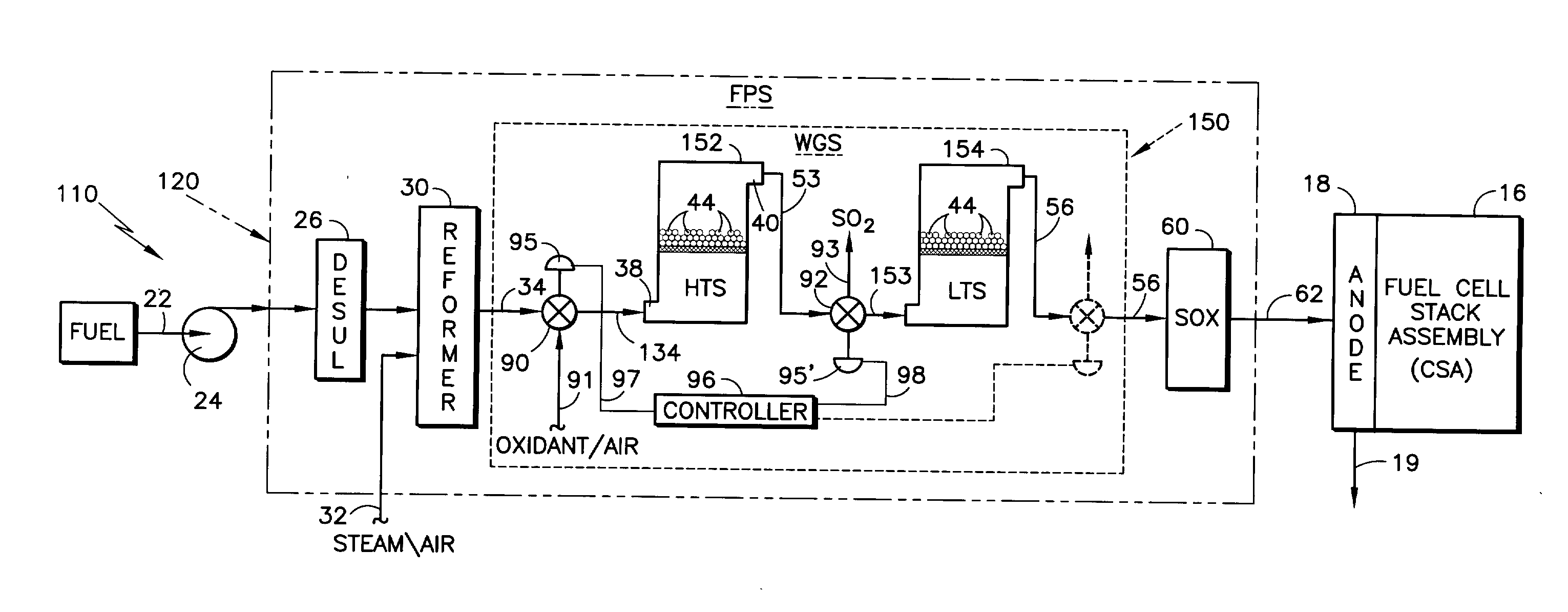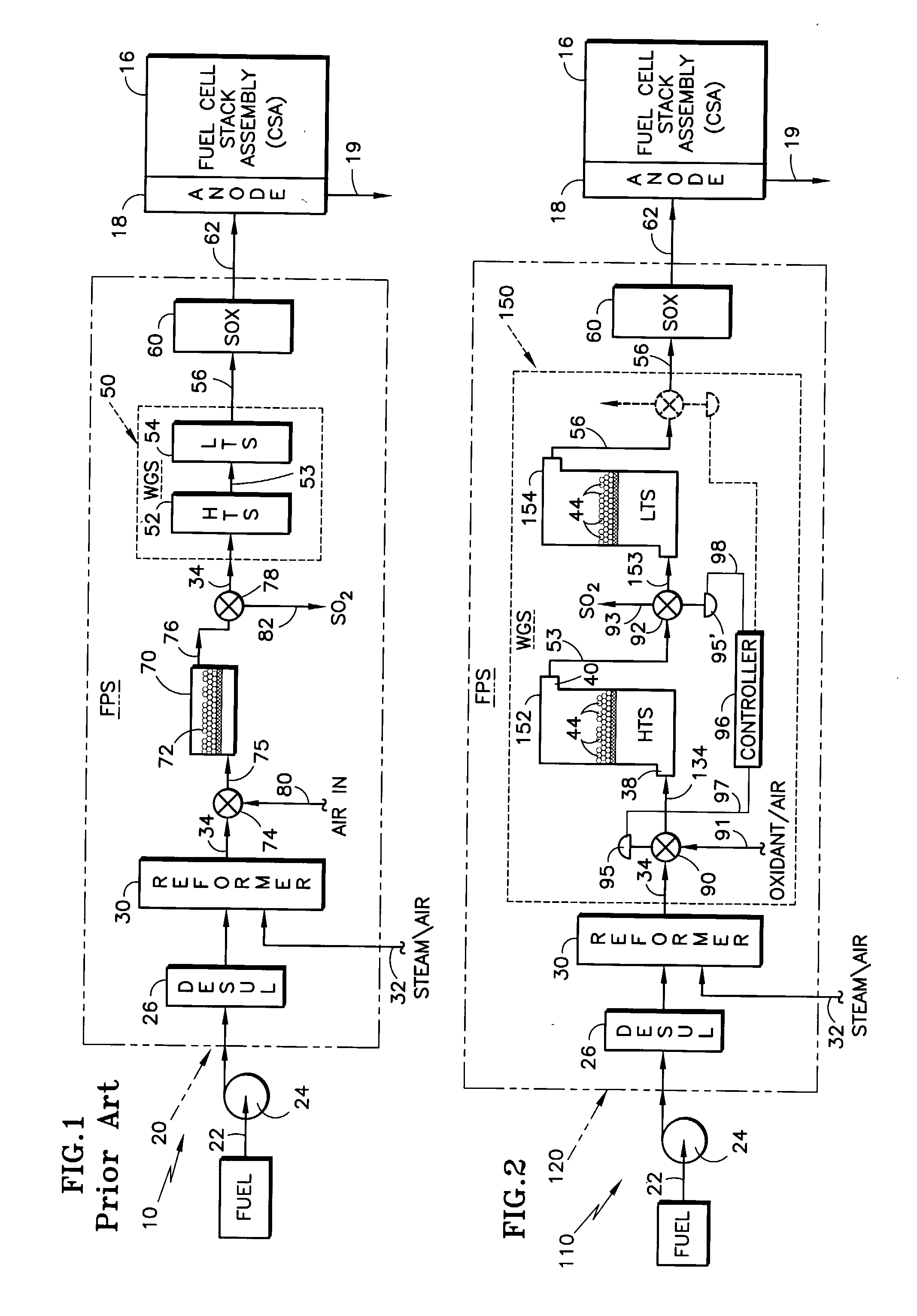Regeneration of Sulfur-Poisoned Noble Metal Catalysts in the Fuel Processing System for a Fuel Cell
- Summary
- Abstract
- Description
- Claims
- Application Information
AI Technical Summary
Benefits of technology
Problems solved by technology
Method used
Image
Examples
Embodiment Construction
[0028]Realizing that a relatively thorough description of a representative fuel cell power plant was undertaken with respect to the description of FIG. 1 prior art, the following description of the invention with reference to FIG. 2 will “piggy-back” on that description of FIG. 1. Referring to FIG. 2, the elements that are essentially the same as their counterparts in FIG. 1 are given the same reference numeral as in FIG. 1, whereas those elements that are functionally similar but include some change in accordance with the invention, are similarly numbered but with a “1” prefix. Added elements are given new numbers. In FIG. 2, there is illustrated a fuel cell power plant 110 similar to that depicted in FIG. 1 with respect to the prior art, but differing principally in that it includes a fuel processing system (FPS) 120 with an improved arrangement for addressing the potential adverse impact of sulfur on sensitive catalysts and / or catalyst supports in accordance with the invention. T...
PUM
 Login to View More
Login to View More Abstract
Description
Claims
Application Information
 Login to View More
Login to View More - R&D
- Intellectual Property
- Life Sciences
- Materials
- Tech Scout
- Unparalleled Data Quality
- Higher Quality Content
- 60% Fewer Hallucinations
Browse by: Latest US Patents, China's latest patents, Technical Efficacy Thesaurus, Application Domain, Technology Topic, Popular Technical Reports.
© 2025 PatSnap. All rights reserved.Legal|Privacy policy|Modern Slavery Act Transparency Statement|Sitemap|About US| Contact US: help@patsnap.com


